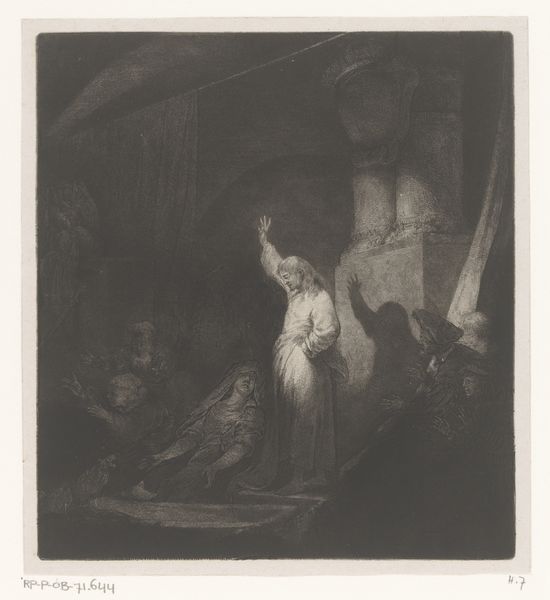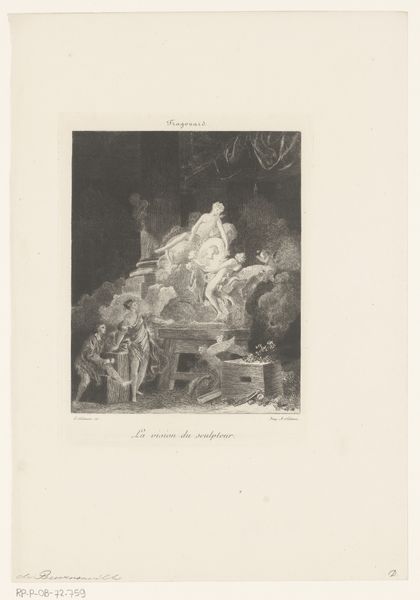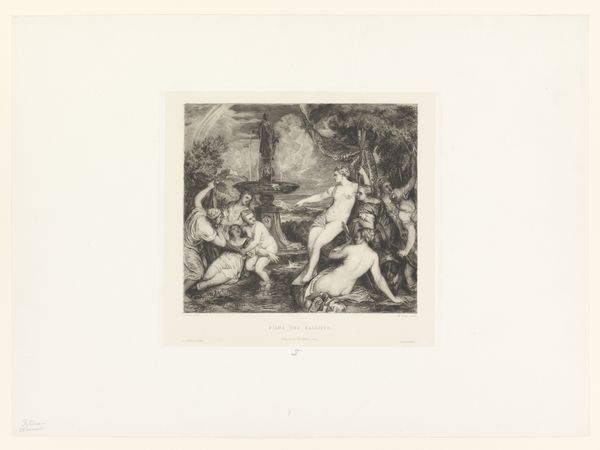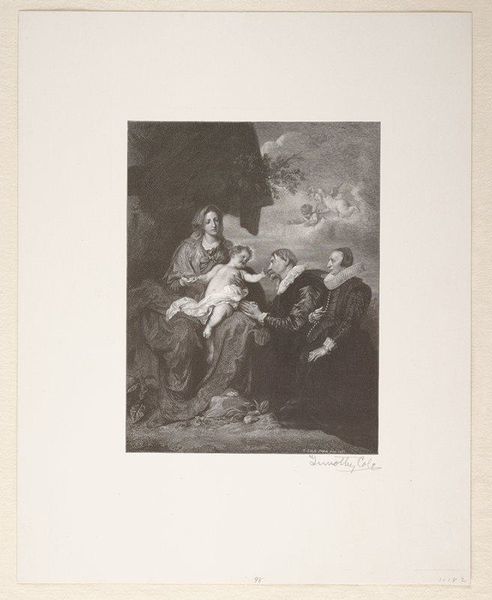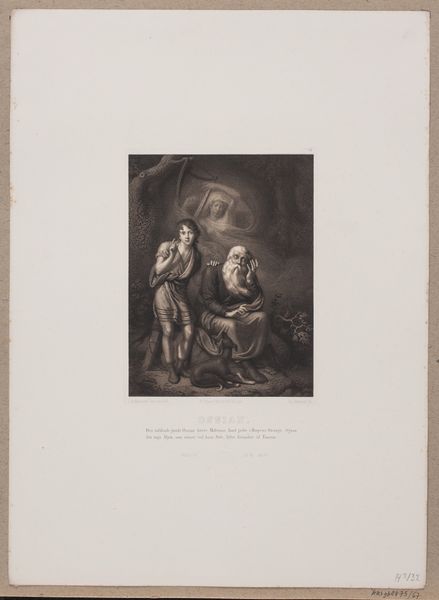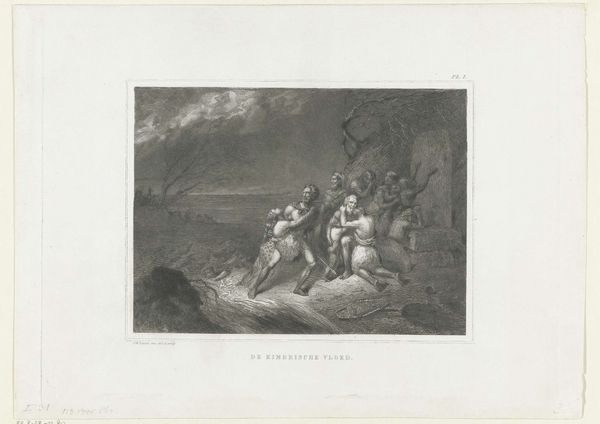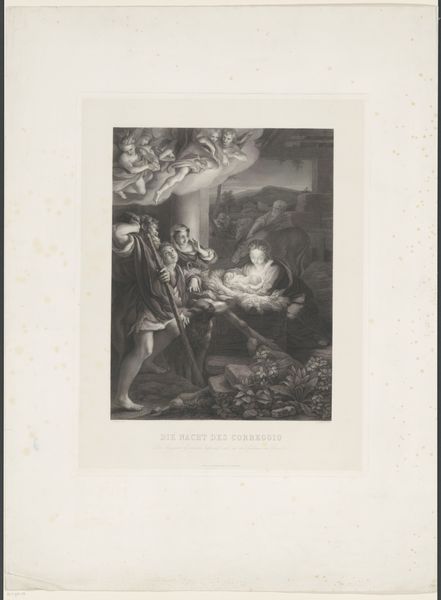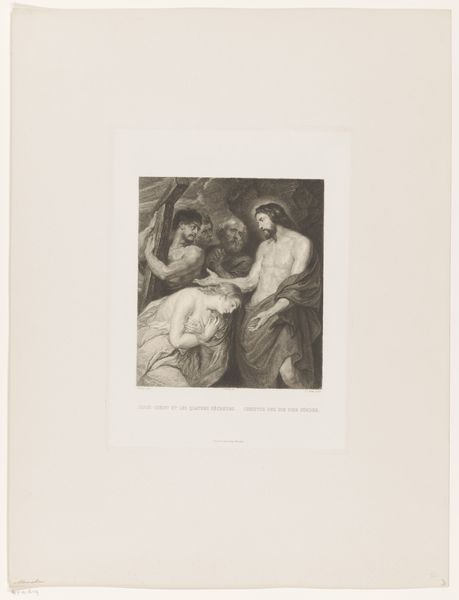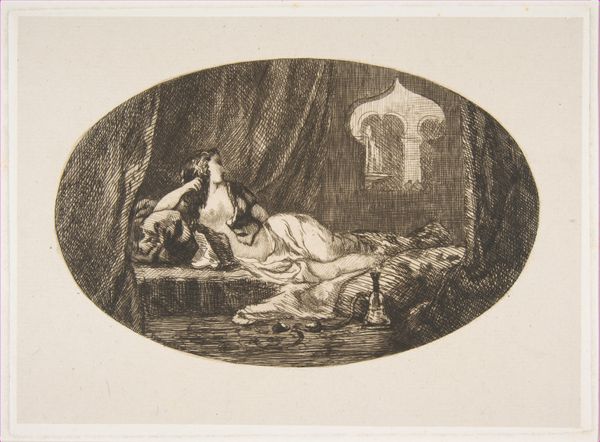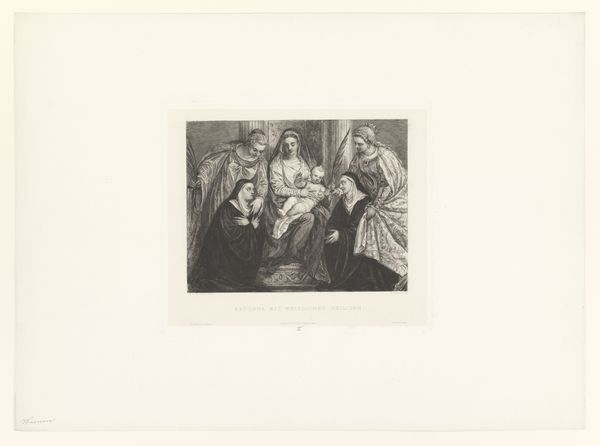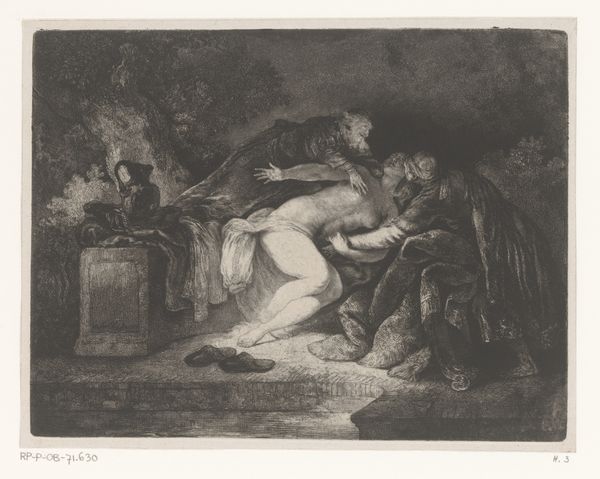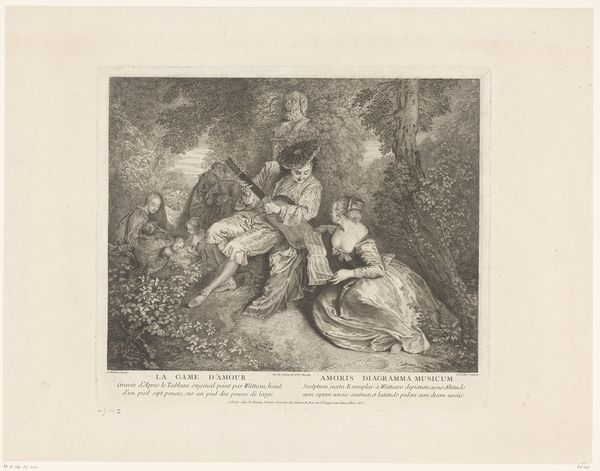
Dimensions: height 272 mm, width 294 mm
Copyright: Rijks Museum: Open Domain
Editor: Here we have Willem Steelink's "Toilet van Batseba," created between 1888 and 1891, rendered in ink, etching and engraving on paper. It's quite a striking piece, very shadowy, almost like a staged scene from a play. What do you see in this work? Curator: The work presents an intriguing arrangement of light and shadow. Note how the artist utilizes contrasting values to define forms and spaces. We see strong diagonals and the distribution of dark masses against the lighter figure of Batseba. Observe how tonal variation creates spatial depth, pulling the eye through the composition. Editor: I see how the contrasts define the figures, particularly Bathsheba, but does the surrounding darkness add to the meaning? Curator: Certainly. Consider the formal properties, which dictate the viewer’s interpretation. The dramatic contrasts evoke an air of theatricality, or even secrecy. How does the medium itself, engraving, etching, ink, impact your perception of the scene? Editor: It gives it an old master feel. The cross-hatching and fine lines feel very intentional. Curator: Precisely. Steelink carefully deploys a range of marks that articulate volume and surface texture. What effect is created through his approach to the figure vs. ground relationship? Editor: I think the textures definitely add another layer of meaning; there's a visual richness created through the intricate play of line and tone. And now that you point it out, the darkness helps focus the viewer on the figures and their interplay. It is more of a psychological study than initially considered. Thank you for that insight. Curator: The experience lies in deciphering its components and arriving at understanding. Thank you for the observation.
Comments
No comments
Be the first to comment and join the conversation on the ultimate creative platform.
